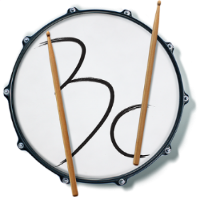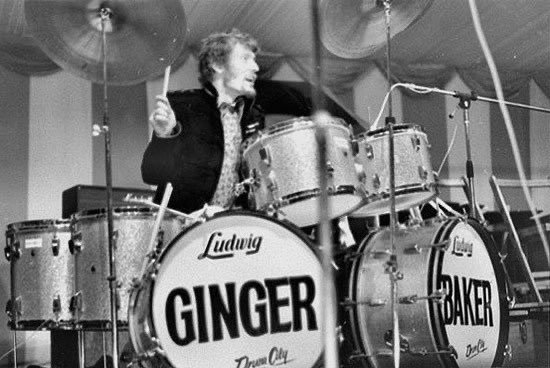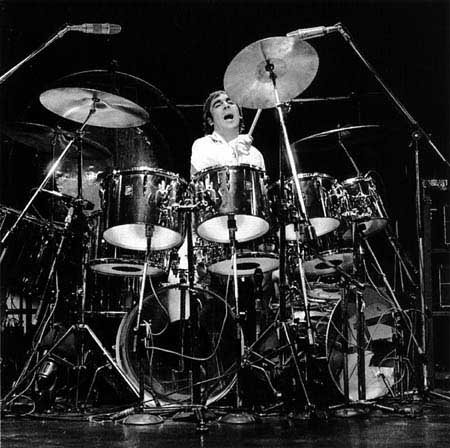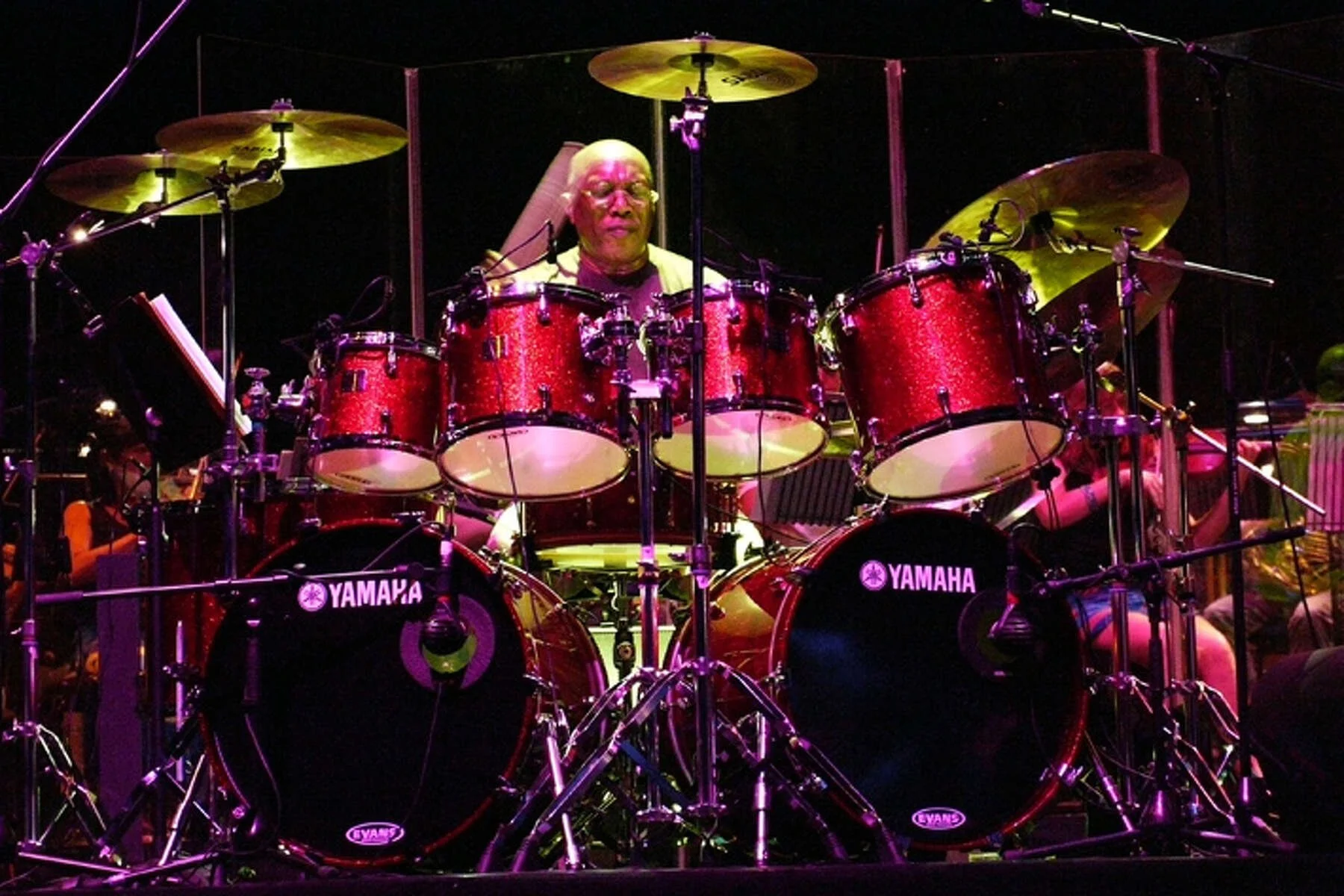A History of Double Bass Drumming
When you think of double bass drumming, what kind of music pops into your head? Probably not country, but some type of high-energy aggressive style, right? Most drummers associate double bass drumming with the relentless barrage of gut-punching single strokes played with the feet in death metal music. But the origins of double kick extend much further into the past, long before metal music was even an idea.
The Origin
In one of our recent blog posts, we got into the inner-workings of bass drum pedals and took a brief look into their creation. Without a doubt, it’s one of the most important innovations of modern drumming since it unlocked drummers’ ability to simultaneously play with their hands and feet. Quick recap: the first kick pedals were a creation of necessity to cut down on space in pit orchestras. Ludwig began manufacturing the first spring-loaded pedals in 1909. Ever since then, the kick pedal has been an integral part of the drum set.
As jazz music took form and developed throughout the 1920s and 30s, the drum set evolved in lockstep. Key features that a lot of modern drummers take for granted, such as the ride cymbal and hihats, began coming into play during this period. Believe it or not, the first murmurs of double bass drumming emerged around 1939 with a teenage Louie Bellson.
Legend has it that Louie, who was just 15 years old at the time, drew a drum set with two bass drums in an art class at school. It would take a few more years, but Gretsch helped bring his vision to life in 1946 with a monstrous drum set consisting of a snare drum, 2 bass drums, 4 rack toms, 2 floor toms, and a special tom that was 18” in diameter and 26” deep. It was pretty overkill, but an innovation that caught the eye of some other drummers. With two bass drums, his feet could effectively play almost any pattern that his hands were able to.
While some bandleaders didn’t particularly like Bellson’s use of two bass drums (looking at you, Benny Goodman...), that didn’t stop him from using two kicks while performing with Duke Ellington during the early 1950s, like in the tune “Skin Deep” (see below - the double kick starts at about 1:07), which was composed by Bellson. But the feel of big band music of the time didn’t rely on bass drums for timekeeping so the massive double kick kits were more for show in their early days. His use of double kick was mostly in the context of soloing. However, Bellson’s innovation set into motion a trend, which would ultimately become a permanent fixture in the drumming world.
The Rock Era
Not too many jazz drummers immediately followed Bellson’s idea of playing drum kits with two bass drums, but rock drummers in the 1960s were much more receptive to the concept and helped push it forward. Iconic drummers like Ginger Baker of Cream (below left), Keith Moon of The Who (below middle), and Mitch Mitchell of Jimi Hendrix were some of the first rock drummers to bring double bass drumming to a much wider audience. However, kits with two bass drums were prohibitively expensive for your average drummer so despite the exposure, widespread adoption didn’t occur (yet).
Drummers really started to get more creative with double kick throughout the 1970s. Carmine Appice, with the band Cactus, threw down arguably the first double kick shuffle groove in 1970 on the song “Parchman Farm” (below left), which became part of hard rock drumming canon. Billy Cobham (pictured above right) pushed the use of double kick to an even higher platitude while playing with Mahavishnu Orchestra during the early 1970s. Cobham’s monstrous drum set was the perfect vehicle for the band’s technical parts and intricate arrangements, which Cobham performed with a ridiculously high level of intensity. He also went on to release numerous albums as a bandleader. One particular album, Spectrum (released in 1973), features another intense double kick shuffle on the tune “Quadrant 4” (below right). Cobham laced ghost notes on the snare drum into the galloping rhythm of the kick while playing a swing pattern on the ride cymbal, which creates an extremely chaotic and dynamic drum part.
An eerily similar groove also famously appeared about a decade later on the 1984 Van Halen song “Hot For Teacher.” Alex Van Halen, who played drums on the track, opens the tune with a wild drum solo where he layers hertas played on a floor tom over the galloping kick rhythm before blasting into the now-iconic groove. By this time, the use of double kick has evolved far beyond its jazz roots. But even the driving kick shuffles weren’t intense enough for the emergence of heavy metal music through the 1980s.
Heavy Metal Takeover
Double kick drumming became more of a timekeeping element within bands like Megadeth, Metallica, Judas Priest, and most influentially, Slayer. Dave Lombardo, Slayer’s drummer, pushed the limits of speed and endurance further than anyone thought possible at the time on Slayer’s 1986 release, Reign in Blood. The song “Raining Blood” (they were really into blood, apparently) is a great example of Lombardo’s double kick speed and precision. He laid the foundation for the extreme metal drummers of today.
As death metal started finding its footing during the late 1980s and through the 90s, double kick became a major component of the music. Bands like Cannibal Corpse, Death, and Autopsy (subtlety wasn’t popular among the genre) featured double kick drumming in practically every song. Concurrently, jazz fusion drummers continued honing their own style of double kick development as well. Fusion drummers such as Virgil Donati, Dennis Chambers, Vinnie Colaiuta, and Terry Bozzio (to name just a few) wove double kick into intricate linear patterns, polyrhythms, and odd meter grooves.
By the 2000s, extreme drumming became a more established approach to playing. More current drummers such as Marco Minnemann, Thomas Lang, and Matt Garstka (among too many others to list) perform rhythmic gymnastics using various techniques to achieve freakishly high speeds and complex patterns. Death metal drummers in particular have continued to push the limitations of the human body. Ultra-fast drummers, like George Kollias (of Nile), Derek Roddy (of numerous groups), and Hannes Grossmann (of Necrophagist, Obscura, Alkaloid) routinely play at speeds in excess of 250 beats per minute. That is blisteringly fast!
Two Bass Drums vs. Double Pedal
While the concept of playing with two bass drums dates back to the late 1930s, the first double kick pedals didn’t hit the market until toward the end of the 1960s. Sleishman Drum Company created the first mass-manufactured double bass drum pedal, known as the “twin pedal” (below left) in 1968. Unlike modern double kick pedals, which have the right pedal clamped to the bass drum hoop with a second pedal attached with a shaft, Sleishman’s design had the bass drum in the middle of the two pedals so the drummer faced directly into the kick. They still produce updated versions of the pedal today. (Note: I heard of another company called DUBL PEDL, which allegedly had a similar design to modern double kick pedals, but was created shortly after the end of World War II - about 20 years before Sleishman’s design. However, I couldn’t find a solid source or additional information about the company.)
The manufacturing of double kick pedals made double bass drumming much more accessible. After all, a pedal is much cheaper than a second bass drum! Also, users don’t have to worry about tuning each kick drum to sound exactly the same, which can be an exceptionally challenging task. However, some drummers prefer the responsiveness of using two single pedals on two different bass drums, since the “slave” pedal on double pedal setups is often a bit more sluggish than the primary pedal. As demand for double pedals increased, all the major brands, including DW, Pearl, Yamaha, and Tama (their Speed Cobra pedal is pictured above to the right), began producing their own models of double bass pedals. Nowadays, pedal manufacturers offer an array of options to accommodate different play styles including different length footboards, beater weights and materials, drive mechanisms, cams, and springs. Some brands even boast constructing their pedals from aerospace-grade materials!
The concept of double bass drumming has had a profound and transformative impact on modern drumming. It’s only a matter of time until other wild innovations make their way to the drum set. It’s possible that something we can’t even conceive of right now becomes commonplace in the drum realm 50 years from now!






